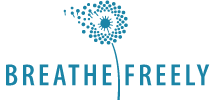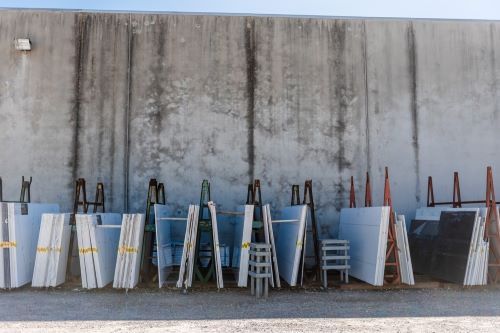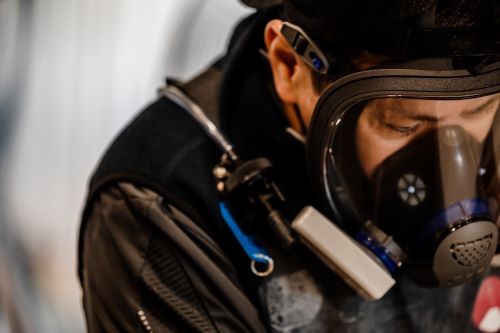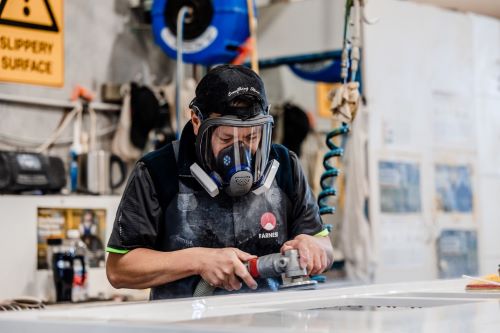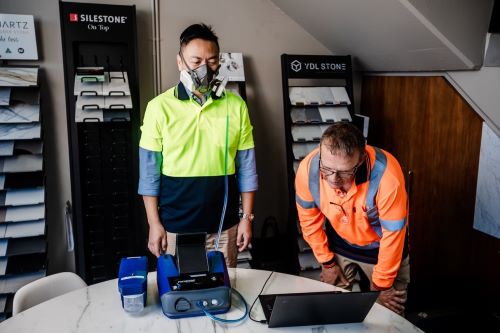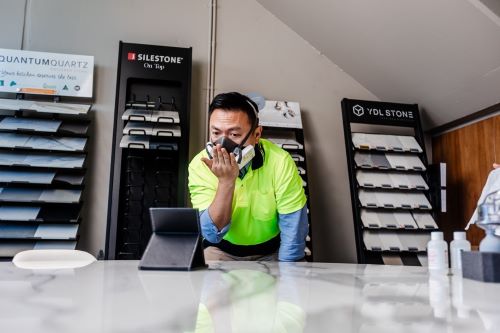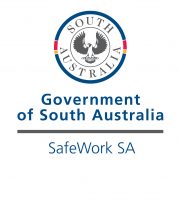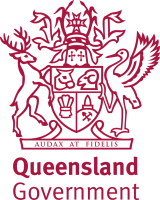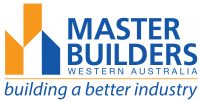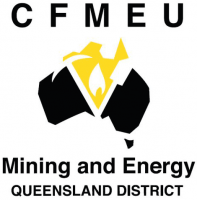What is crystalline silica and silica dust?
Crystalline silica is a natural mineral found in many materials. Cutting, grinding, polishing and trimming these materials creates very small particles known as silica dust.
Breathing in silica dust can cause serious and often fatal diseases such as silicosis and lung cancer.
All stone benchtops contain crystalline silica. The amount of crystalline silica varies but can be as high as 95%. When silica dust is released into the air during any dust-creating activity, it puts the health of workers at risk.
How can silica dust affect your health ?
Exposure to silica dust can lead to:
- Silicosis (an irreversible scarring and stiffening of the lungs)
- Progressive Massive Fibrosis (PMF)
- Chronic Obstructive Pulmonary Disease (COPD)
- Lung cancer
- Kidney disease
- Auto-immune diseases such as rheumatoid arthritis
One in four stone workers have silicosis because of silica dust in some parts of Australia.
Watch: The Impact of Silicosis
What laws protect workers from silica dust?
All states and territories of Australia have Occupational / Work Health and Safety Laws that protect workers. These laws require protecting workers from silica dust.
What do the laws require?
Everyone has a role in keeping workers safe including suppliers, employers and workers. The law requires employers to completely prevent workers breathing in silica dust. If that’s not possible, they must reduce exposure to silica dust as much as they can.
Practical guides explaining how to protect workers can be found on your state and territory’s Work Health and Safety Regulator website. For example, New South Wales’s Regulator is SafeWork NSW.
What is an “Exposure Standard” ?
An exposure standard is the upper legal limit of silica dust a worker can breathe in. It is not a fine line between safe and unsafe.
Everyone is different, and everyone responds differently. So it’s important to keep levels as low as possible.
The exposure standard for silica dust is 0.05 mg/m3.
How do I know if the Exposure Standard has been exceeded?
The only way to know for sure if the exposure standard has been exceeded or not is to do air monitoring. An employer must do air monitoring if they are not certain that the exposure standard hasn’t been exceeded. Air monitoring involves measuring the level of silica dust in the breathing zone of workers during their usual shift activities, including routine breaks.
Air monitoring can also be used to:
- make sure control measures are working correctly
- educate workers about exposures
- determine the right level of respiratory protection, and
- inform health monitoring requirements.
Air monitoring should be conducted by a competent person such as an occupational hygienist.
Who can assist in assessing silica dust exposure and how to keep workers safe?
Occupational hygienists can help employers assess and control exposures to silica dust and help keep workers safe from disease. They can monitor silica dust exposure and can support employers with preventing exposure to silica dust.
How can I find an occupational hygienist?
You can find an occupational hygienist through the “Find a Consultant” function on the Australian Institute of Occupational Hygienists website here: https://www.aioh.org.au/resources/consultants/
Is Health Monitoring required?
Health monitoring is the process of being seen by a doctor to examine and monitor the health of workers to see if exposure to silica dust at work is affecting their health. Employers must arrange for health monitoring for workers regularly exposed to silica dust.
How can you protect yourself from silica dust exposure?
Protecting yourself and workers from silica dust means having good control measures in place. Some of those control measures include:
- Never cutting, grinding or polishing stone dry
- Using water to suppress dust from cutting and making sure that tools and machinery are designed for use with water attachments and dust extraction
- Cleaning up slurry with low pressure water, wet sweeping or an M- or H- class rated vacuum cleaner (never using a broom)
- Using personal respirators and ensuring that it is fit-tested and fit-checked before use
What should I know about using Respirators ?
- You must be clean shaven if your respirator seals against your face
- Know how to correctly put on your respirator, how to take it off, and how to safely dispose of it – ask your supplier or an occupational hygienist
- Know how to maintain your respirator (when to discard disposable respirators, when and how to change the filter, and how to keep the respirator clean and stored appropriately)
- You must be fit-tested for the specific make and model of respirator
- You must do a fit-check
Watch: Respiratory protection – What is it & how do you use it correctly?
What is Fit Testing of Respirators?
As our faces come in all shapes and sizes, each worker needs a respirator that fits them. Fit testing is a way of knowing how well a respirator fits a worker’s face. Fit testing is essential to make sure that the respirator works correctly and is comfortable to wear.
Employers must make sure that respirators are a suitable size, fit and are reasonably comfortable. AS/NZS 1715 is an Australian Standard which discusses respirator fit testing and all the other requirements of managing respirators. Your state and territory’s Work Health and Safety Regulator (e.g. SafeWork NSW) or an occupational hygienist can help you understand these requirements.
Not providing respirators or fit testing can lead to fines or notices from the regulator.
Watch: Respiratory protection – Fit testing
What type of respirators need to be fit tested?
All tight-fitting respirators that rely on a seal around the face, need to be fit-tested before use. These include:
- Disposable respirators (e.g. P2/N95 respirators)
- Re-usable half-face respirators
- Full-face respirators, including those with powered air (e.g. PAPR) where a tight seal around the face is needed
Who can conduct the fit-test?
Fit testing should be conducted by a trained person such as a RESP-FIT accredited provider.
What is RESP-FIT?
RESP-FIT is a national respirator protective equipment (RPE) fit testing training and accreditation program for fit-testing. RESP-FIT was developed by the Australian Institute of Occupational Hygienists .
Where can I find a RESP-FIT Accredited fit-tester?
You can find a RESP-FIT Accredited Fit Tester here: https://respfit.org.au/find-a-fit-tester/
What is the difference between Fit Testing and Fit Checking ?
Fit Testing
Fit testing is a test performed each year and detects air leaks around the respirator. If there isn’t a good seal, the worker may not get the level of protection that is needed to protect their health.
Workers must pass a respirator fit test before they first start wearing a tight-fitting respirator.
Fit testing is required for all types of tight-fitting respirators.
If a worker does not pass a fit test, the worker may obtain a better fit by trying a respirator of a different size or model or made by another manufacturer. Alternatively, a respirator that doesn’t rely on a tight-fitting face seal, such as a hood type may be selected if suitable.
Fit Checking
Each time a tight-fitting respirator is put on, the worker should carry out a fit check.
A fit check is a quick check to ensure the respirator, which has been fit tested, has been properly positioned on the face and there is a good seal between the respirator and face.
Fit checks do not replace the need for a fit test.
